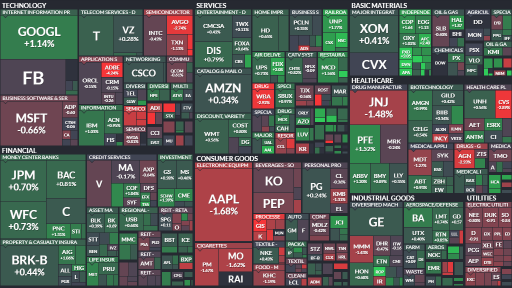- Home
- >
- Fundamental Analysis Education
- >
- How to determine the value of a share

How to determine the value of a share

There are four baseline ratios through which we can determine the value of a share. These are the ratios between certain company values that give us a clearer idea of whether the share price is fair, underestimated or overvalued.
1. The first factor is the ratio between the market price per share and its book value P/B (Price to book value).
Before we look at the R/C, we will note that the accounting value of a company is calculated on the basis of its own capital, which is the value of its assets after deducting its total liabilities (liabilities). The result obtained is divided by the number of shares of the company, thus obtaining the book value.
Let's look at an example. Let's assume that the X company we want to invest in has assets of BGN 20 million and liabilities of BGN 15 million. The shares in circulation are priced at BGN 60 and the number is 100,000.
In order to calculate the accounting value of the company, we should determine its own equity and divide the result obtained by dividing it into the number of shares.
20 - 15 = BGN 5 million own capital
5 000 000/100 000 = 50 BGN book value per share.
We already know the book value and we can now determine the R/C ratio by dividing the market price of the book value obtained.
60/50 = 1.2. The ratio of the market price to the accounting value of company "X" is 2.
The R/C ratio offers guidance to investors looking for shares at a reasonable price. If a share is traded at a price lower than R/C, it means that the market considers the company's assets as undervalued or profits to be too low.
If a share is traded above R/C, it means that the value of the company's assets is overestimated or offers a high return that is attractive to investors.
It is important to clarify that, despite the simplicity of the coefficient, we should not make an investment decision entirely based on its data. One of the reasons for this is that the book value of a company's assets may differ significantly from the market value. Thus, the R/C ratio would not provide a true picture of the share price. When analyzing a company, it is advisable to calculate all four ratios before making a purchase or sale decision.
2. The second factor is the ratio between the price per share and the profit to earnings (P/E).
P/E became popular in the 1930s thanks to fundamental analysts and expressed the price investors are willing to pay for a unit of the selected company's profit.
It is calculated as the current price of a share is divided by the profit from the share (ESP).
To determine P / E, we first have to calculate one EPS (EPS). It is calculated by dividing the resulting dividend on the number of shares in circulation from the net profit of the company in which we wish to invest.
EPS = net profit * - dividends / number of shares in circulation
* net profit - this is the net (net) profit of the company. Taxes already deducted from it.
To determine P / E, once we have calculated EPS, we just need to divide the current price per EPS share.
P / E = current price per share / earnings per share (EPS)
If the price per share is 20 BGN and EPS is 2 BGN, this means that the P / E will be 10.
For R / E 10, investors pay 10 BGN for every 1 BGN of the company's profits.
It is important to note that R / E does not reflect future business prospects, assuming that there will be no increase or decrease in revenue over the current level.
Companies with a rapid profit growth increase the value of their securities, which means that the R / E ratio will be higher. The higher the factor for a given company than the average for the market (for greater accuracy, the average factor for the sector in which the company operates, for example, the technology, pharmaceuticals, automotive), the higher the expectations for investors.
If the R / E of a company has high values, it means that it will have to constantly seek to increase its profit if it wants to keep it at those levels or even raise it.
This is because the P / E expresses the price / profit ratio, ie. if the price of the shares rises and the profit - no, the coefficient will report lower values, which would not be well accepted among the investors.
Lower P / E values than industry averages often mean that the company is underestimated. It should not be forgotten, however, that a company's profit data is published on specific dates, and shares are constantly changing, so when the stock price drops, investors may expect that profits will fall, which would further reduce the value of the shares
 Trader Petar Milanov
Trader Petar Milanov Read more:
If you think, we can improve that section,
please comment. Your oppinion is imortant for us.











